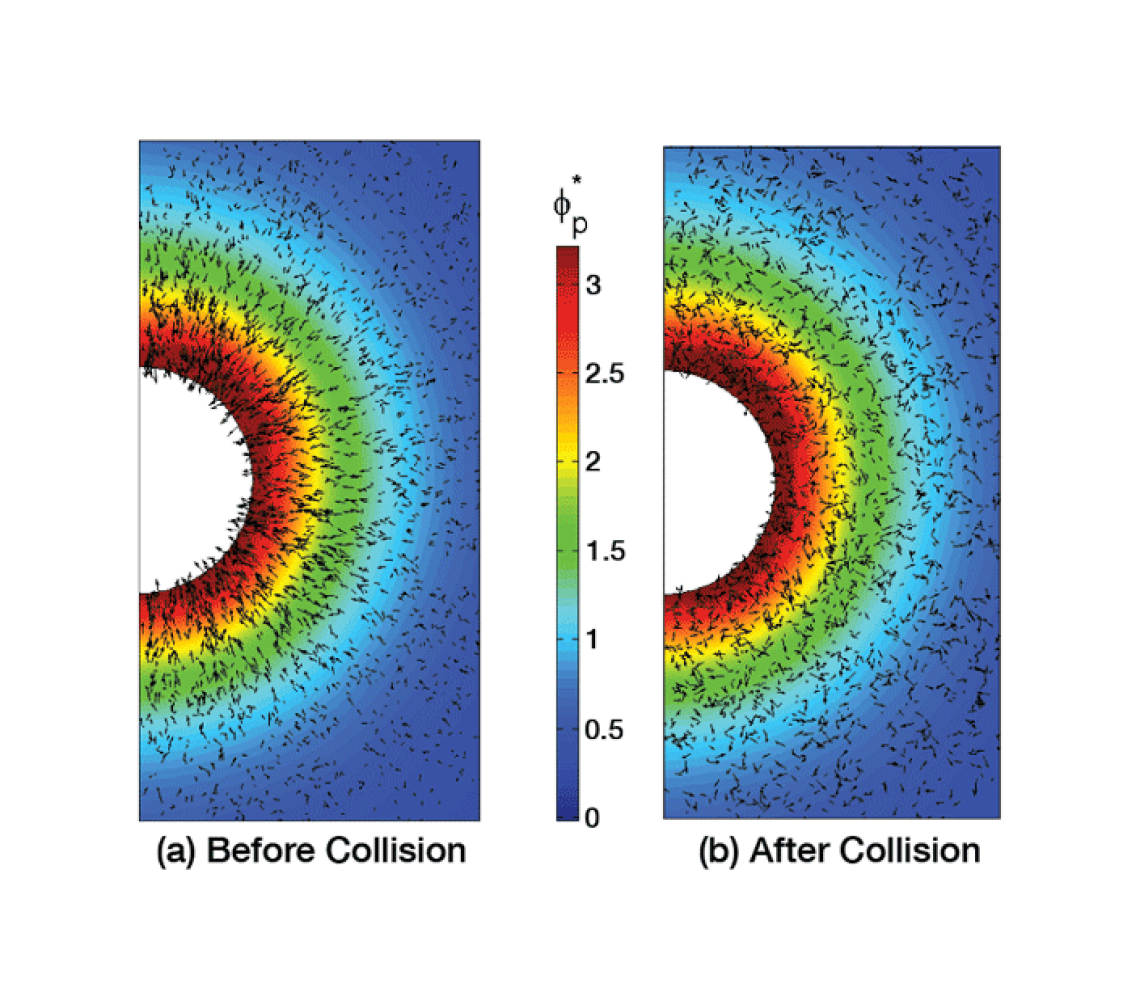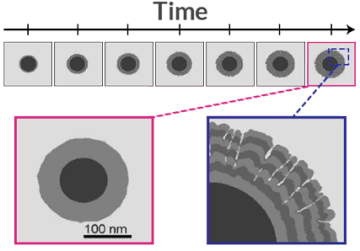
Plasma Flow
Farzad Mashayek February 23, 2015
The unique ability of non-equilibrium plasma discharges to selectively stimulate the desirable high-temperature chemical reactions at low gas temperatures and pressures has made them an indispensable step in the production line of various high-tech products. This method, also known as Plasma-Enhanced Chemical Vapor Deposition (PECVD), is used in this research to coat the surfaces of nanoparticles. In addition to enhancing the CVD process, the non-equilibrium plasma is used for levitating the nanoparticles away from the walls, thus allowing for deposition throughout their surfaces. This type of plasma is known as dusty plasma. To simulate the complex processes involved in nanoparticle coating, we adopted a mutiscale approach.

Particle-In-Cell (PIC) Method
At the smallest scale, the plasma modeling is conducted using the PIC method, where the movements of electrons and ions are tracked in detail. Due to excessive computational cost, the PIC approach is mainly limited to a single dust particle; however, it is capable of providing a detail fundamental understanding of charging and coating process.
Kinetic Model

To predict the deposited film morphology in PECVD, we developed a numerical kinetic model. The morphological accretion of a circular object is studied in a two-dimensional geometry and the most important deposition phenomena are taken into account, i.e., surface diffusion and surface ion bombardment. Both isotropic and anisotropic plasmas are considered. It is shown that when the particle is located in an isotropic plasma, the deposited film maintains the original particle sphericity.
Fluid Model
For practical purposes, the method of choice is via the solution of the ‘fluid’ transport equations augmented by an ionization model. The dust particle dynamics is modeled by considering a variety of forces acting on the particle. These include gravitational, electric, ion drag, and neutral drag forces. The chemical reaction modeling is included for a CH4/H2 plasma. The reaction model considers neutral species (CH4 and H2) introduced in the reactor, along with positive ions, radicals (which are the species that contribute to the growth of the dust particle surface) and other neutral molecules produced by reaction of the above.
Example
The movie shows that a nanoparticle released from the top electrode is trapped near the bottom electrode, before starting to move upward due to the thermophoretic force.

